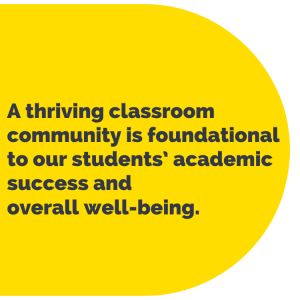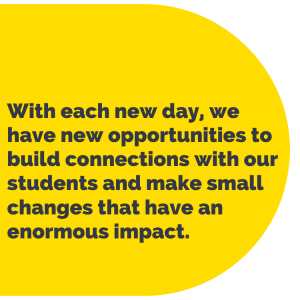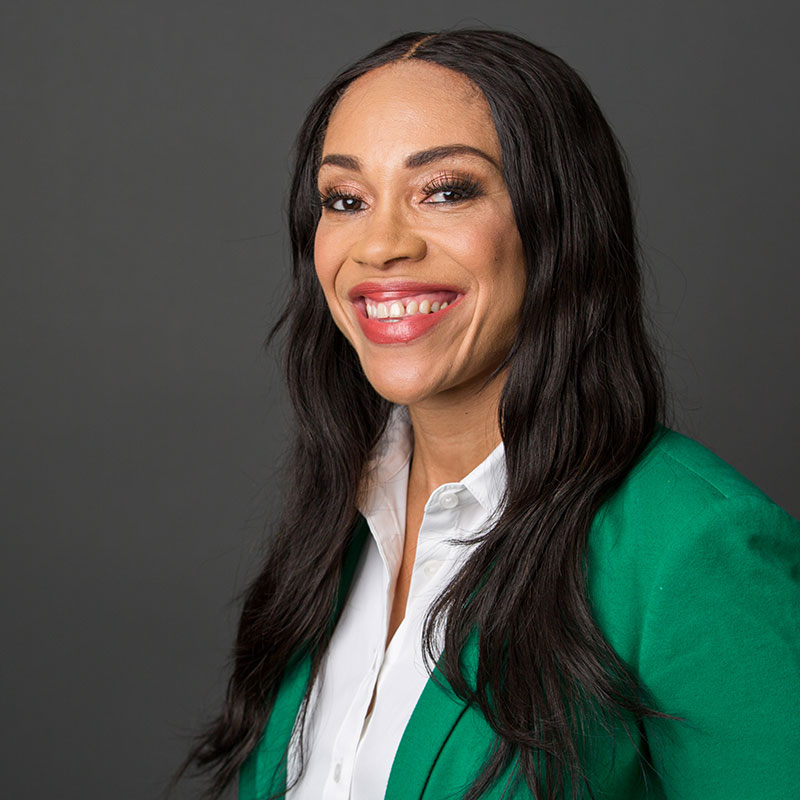Welcome back to another school year! I love so many things about this season, but I especially enjoy reconnecting with our returning teachers and meeting the new additions to our team. This year, I was thrilled to see a returning teacher, Mr. Shawn Toulson, who also happened to be my student in my first year of teaching at P.S. 30 in Paterson, NJ. Thinking back to those days, I never could have imagined that our paths would cross again in exactly this way. I’m humbled to think that the time I spent with Mr. Toulson might have influenced his decision to serve as an educator. I’m also reminded that, as teachers, we never know how our relationships with students might impact their lives.
In fact, the relationships between students and teachers, as well as the many other kinds of relationships that define a school community, continue to be a central focus for all of us at Uncommon Schools. This year, we continue to draw inspiration from Zaretta Hammond’s transformational book, Culturally Responsive Teaching & The Brain. Hammond’s work affirms something great teachers know: a thriving classroom community is foundational to our students’ academic success and overall well-being. And, the process of building that community begins with fostering relationships in which students feel seen, valued, and loved.
Easy ways to build trust and rapport
To support our teachers and leaders in that foundational work, our professional learning includes two beautifully intuitive yet profoundly impactful tools. The first of these is a matrix of the Trust and Rapport Generators adapted from Hammond’s book. This tool builds on a core idea: students will put forth greater effort when they believe that their teacher loves them for who they are today and is confident in the person they will become. The matrix includes a wide variety of entry points into the kind of close and caring student-teacher relationship that makes it possible for teachers to call forth students’ best efforts and engage them in the productive struggle that takes learning to the next level.

For example, the Trust and Rapport Generators matrix includes three overarching strategies for connection with students based on familiarity, similarity of interests, and concern. Shifting from “small talk” to “real talk” is an example of an approach that builds familiarity. This could include simply referring to members of a students’ family by name rather than more generally – asking, for instance, “How is your older brother Darnell doing?” instead of “How is your family?” Noticing a student’s interest in Pokémon and sharing your favorite character is an example of finding similarity of interests, while checking in with a student who doesn’t seem to be feeling well would demonstrate concern.
When I was a new teacher, it was important to me to build rapport with my students. I was able to build trust by finding ways to make real connections, seeing them for who they are, and challenging them to be their best selves. So when I ran into Mr. Toulson, I was elated to learn that he is a teacher at North Star Westside Park and wanted to hear about his impact with his students. “Meeting people where they’re at is probably my best skill,” Mr. Toulson said. “Building rapport, gaining trust, and actually showing real interest in my students is critical to my ability to get students where they’re going,” he added.
Key Takeaway: Engaging strategies to demonstrate that you care for your students will help create the psychological safety that is necessary for students to take risks and challenge themselves in their learning.

“A sense of clarity”: Daily self-reflection
If we think of trust and rapport as the overarching goal for the student-teacher relationship, the second tool I’d like to share provides a daily snapshot of what each student is bringing to that interaction. Each day, in many of our classes, our teachers use a Mood Meter, developed by Yale University, to assess students’ emotional state and individualize their approach and instruction accordingly. For example, if one or more students have shared that their mood falls somewhere in the red zone (high energy, low pleasantness), a teacher may choose to play soothing music during independent work time and emphasize one-on-one check-in’s throughout the day.
Earlier this year, we had a chance to hear from students at our Uncommon Leadership Charter High School in Brooklyn, New York, who explained how the Mood Meter has helped them connect with themselves and share what they’re feeling with others in the video below. “I love the Mood meter because I really haven’t been accustomed to sharing my feelings,” said Justin, who graduated this spring and is currently studying Computer Science at St. Johns University. “But having that time for self-reflection, combined with me being able to understand myself and put it down on paper, has given me a sense of clarity,” Justin said.
Try It Out: To experiment with the Mood Meter in your classroom, consider modeling a guided reflection as described in this script. Modeling the tool not only illustrates what students will do, it demonstrates the brave sharing and selective vulnerability that are key to building relationships of trust and rapport.
The beauty – and the challenge – of teaching lies in the fact that we begin anew not just every year, but every day. With each new day, we have new opportunities to build connections with our students and make small changes that have an enormous impact. I hope these tools will help you do exactly that! 


